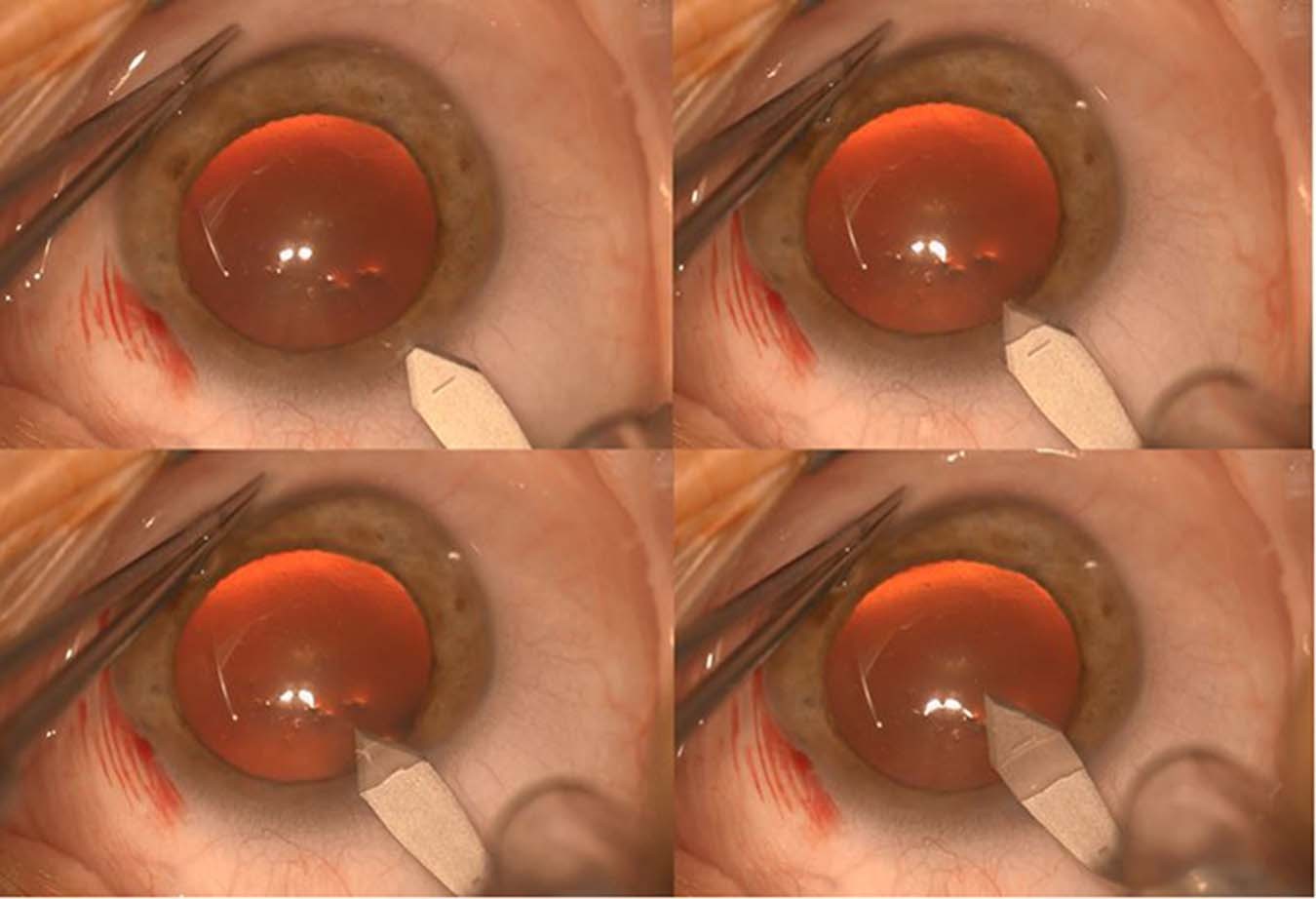Cataract surgery is a common procedure aimed at restoring clear vision, especially among older adults. As cataracts develop, they can significantly impact an individual’s ability to see and carry out everyday activities. This article will navigate through the costs associated with cataract surgery in Australia and provide essential insights to help you prepare for the procedure, should you need it.
Understanding Cataracts and the Need for Surgery
Cataracts occur when the natural lens of the eye becomes cloudy, leading to blurriness, glare, and difficulty seeing in low-light conditions. This condition is primarily age-related but can also result from other factors such as diabetes, long-term use of corticosteroid medications, or previous eye injuries. The gradual progression of cataracts can significantly impact an individual’s quality of life, making it challenging to perform everyday tasks and enjoy activities that require clear vision.
Cataract surgery can be a life-changing procedure, restoring clarity and improving the quality of life for those affected by cataracts. Understanding the cataract surgery costs associated with the surgery in Australia, including potential insurance coverage and financing options, is paramount for informed decision-making.
In Australia, cataracts are one of the leading causes of vision impairment among the elderly. When daily activities like reading, driving, or watching television are affected, surgery becomes a viable solution. The procedure typically involves removing the cloudy lens and replacing it with a clear artificial lens, which is usually performed on an outpatient basis. Interestingly, the prevalence of cataracts is expected to rise as the population ages, highlighting the importance of awareness and early detection in managing this condition effectively.
It is important to recognize the signs of cataracts, such as persistent blurry vision, trouble seeing at night, and noticing halos around lights. If you experience these symptoms, consulting an eye care professional is essential. They can provide a thorough examination and determine if surgery is necessary. Additionally, regular eye check-ups play a crucial role in monitoring eye health, especially for those at higher risk of developing cataracts due to genetic factors or existing health conditions.

Types of Cataract Surgery
There are primarily two methods of cataract surgery: phacoemulsification and extracapsular cataract extraction. Phacoemulsification is the more common technique, where the cataract is broken into smaller pieces using ultrasound waves, making it easier to remove. In contrast, extracapsular surgery involves removing the cloudy lens in one piece and may be chosen for advanced cataracts. Both techniques are generally safe and performed under local anesthesia, ensuring patients remain comfortable during the procedure. Recovery times can vary, but many individuals notice an improvement in vision within a few days following the surgery. Post-operative care is equally important, as following your surgeon’s instructions can help prevent complications and promote healing.
Moreover, advancements in technology have led to the development of laser-assisted cataract surgery, which offers increased precision in the procedure. This innovative approach uses a femtosecond laser to perform key steps in the surgery, potentially leading to better outcomes and reduced recovery times. As a result, patients are encouraged to discuss all available options with their eye care provider to determine the best approach for their unique situation.
The Role of Eye Specialists
Before undergoing surgery, consulting with a qualified ophthalmologist is crucial. They will assess the extent of your cataracts and discuss your expectations for surgery. This initial consultation usually involves a comprehensive eye exam, including measuring your eye and evaluating your overall eye health. Understanding your specific vision needs is essential, as it helps the surgeon tailor the procedure to achieve optimal results.
Your surgeon will also discuss various types of intraocular lenses (IOLs) that can be used during the procedure, such as monofocal, multifocal, or toric lenses, depending on your vision needs post-surgery. This discussion ensures that your surgery aligns with your lifestyle and visual demands. Additionally, the choice of IOL can significantly affect your vision quality after surgery, making it essential to weigh the pros and cons of each option carefully. Many patients find that their newfound clarity of vision enhances their overall well-being, allowing them to engage more fully in life’s activities. Learn more about quality on https://piqc.edu.pk/strategy-for-resposible-quality-education-in-pakistan/
The Costs Associated with Cataract Surgery in Australia
The cost of cataract surgery in Australia can vary significantly, depending on several factors, including whether the procedure is performed in a public or private hospital and the type of lens chosen. Medicare provides coverage for cataract surgery in both public and private settings, but out-of-pocket expenses can differ.
On average, the total cost for cataract surgery in a private hospital can range from AUD 3,000 to AUD 5,000 per eye. This variation includes the surgeon’s fees, anesthetist fees, facility costs, and the type of lens used. For those opting for surgery in a public hospital, costs may be significantly lower, often fully covered by Medicare, but waiting times can be longer.
Additionally, if you opt for a premium IOL, such as multifocal lenses, you may incur additional costs. While these lenses can reduce dependence on glasses post-surgery, they usually come with a higher price tag.
Understanding Medicare Coverage
Medicare Australia provides support for cataract surgery, often covering a substantial portion of the costs when performed in a public setting or by an eligible provider. However, it is essential to understand what is included under Medicare—namely, the surgery itself and basic standard lenses.
If you choose to go privately, check with your health insurance provider about coverage for the procedure. Many private health insurance plans do cover cataract surgery, but the extent of coverage and associated costs can vary significantly. It’s also worth noting that some plans may have waiting periods or specific conditions that must be met before you can claim benefits for this type of surgery.
Additional Expenses to Consider
Beyond the immediate costs of surgery, consider additional expenses that may arise during your cataract journey. Post-operative visits to your eye care specialist are crucial for monitoring your recovery and ensuring proper healing. These appointments can add to your overall costs.
Moreover, post-surgery, you may need to purchase prescription glasses or other optical aids to help your vision perform optimally, especially if you choose a monofocal IOL, which typically only corrects vision at a single distance. It’s also important to factor in the potential need for follow-up treatments or enhancements, which can further influence your overall financial commitment to the procedure. Many patients find that investing in quality sunglasses or protective eyewear post-surgery is essential, as it helps shield their newly improved vision from harmful UV rays and glare, adding yet another layer to the financial considerations involved in cataract surgery. To read more about harmful click here.
Financing Options for Cataract Surgery
Considering the costs involved in cataract surgery, exploring financing options can alleviate some financial burdens. Many private clinics offer payment plans, allowing patients to pay in installments rather than a lump sum, making it more manageable. These plans can vary significantly, with some clinics offering zero-interest financing for a certain period, while others may have flexible terms that can be tailored to fit your budget. It’s advisable to inquire about any hidden fees or interest rates that could affect the total cost over time.
Additionally, if you have health insurance, reviewing your policy details regarding cataract surgery coverage can help you plan better. Some insurers may offer extras plans that can aid in covering certain out-of-pocket costs associated with the procedure. Moreover, certain organizations and charities may provide financial assistance or grants specifically for eye surgeries, which can be a valuable resource for those who qualify. Researching these options thoroughly can provide peace of mind and ensure that financial concerns do not hinder your access to necessary medical care.
Preparing for Your Surgery
Preparation for cataract surgery begins with a thorough consultation with your ophthalmologist where discussions about your medical history, current medications, and surgery expectations take place. Following their recommendations is important; this may include temporary adjustments to medications or specific instructions leading up to your surgery. It’s also beneficial to prepare a list of questions for your doctor during this consultation, as understanding the procedure and what to expect can significantly reduce anxiety. You might also consider discussing the type of intraocular lens that will be used, as there are various options available that can affect your vision post-surgery.
Additionally, arrange for someone to accompany you on the day of your surgery, as you will likely be advised not to drive immediately afterward. Having a support system during recovery—whether family, friends, or caregivers—can also expedite your healing process and provide peace of mind. It’s wise to prepare your home for your recovery by ensuring that you have a comfortable space to rest, with easy access to essentials like food and medications. This preparation can make a significant difference in your overall recovery experience, allowing you to focus on healing without unnecessary stress.

What to Expect Post-Surgery
After surgery, it’s common to experience some discomfort, which usually subsides within hours or days. Many patients notice improved vision shortly after the procedure; however, your sight may adjust and sharpen over the following weeks as you heal. During this time, it’s important to be patient with your recovery process, as each individual’s healing timeline can vary. Some patients may experience fluctuations in their vision as their eyes adjust to the new lens, which is a normal part of the healing journey.
It’s essential to follow post-operative care instructions provided by your surgeon, which often include avoiding strenuous activities and protecting your eyes from irritants. Attending follow-up appointments is crucial to monitor healing and address any concerns that may arise. In addition to these appointments, many patients find it helpful to keep a journal of their recovery, noting any changes in vision or discomfort levels. This can provide valuable insights for both you and your healthcare provider, ensuring that any potential issues are addressed promptly. Furthermore, engaging in light activities, such as gentle walks, can promote circulation and aid in your overall recovery while keeping you active and engaged during the healing process.
Final Thoughts
By being well-informed and prepared, you can navigate the cataract surgery process with confidence, ensuring a smoother experience toward clearer vision. Always consult with an ophthalmologist to make educated decisions tailored to your personal circumstances.
Other resources: Cataracts Surgery Explained Symptoms, Treatment & Recovery
